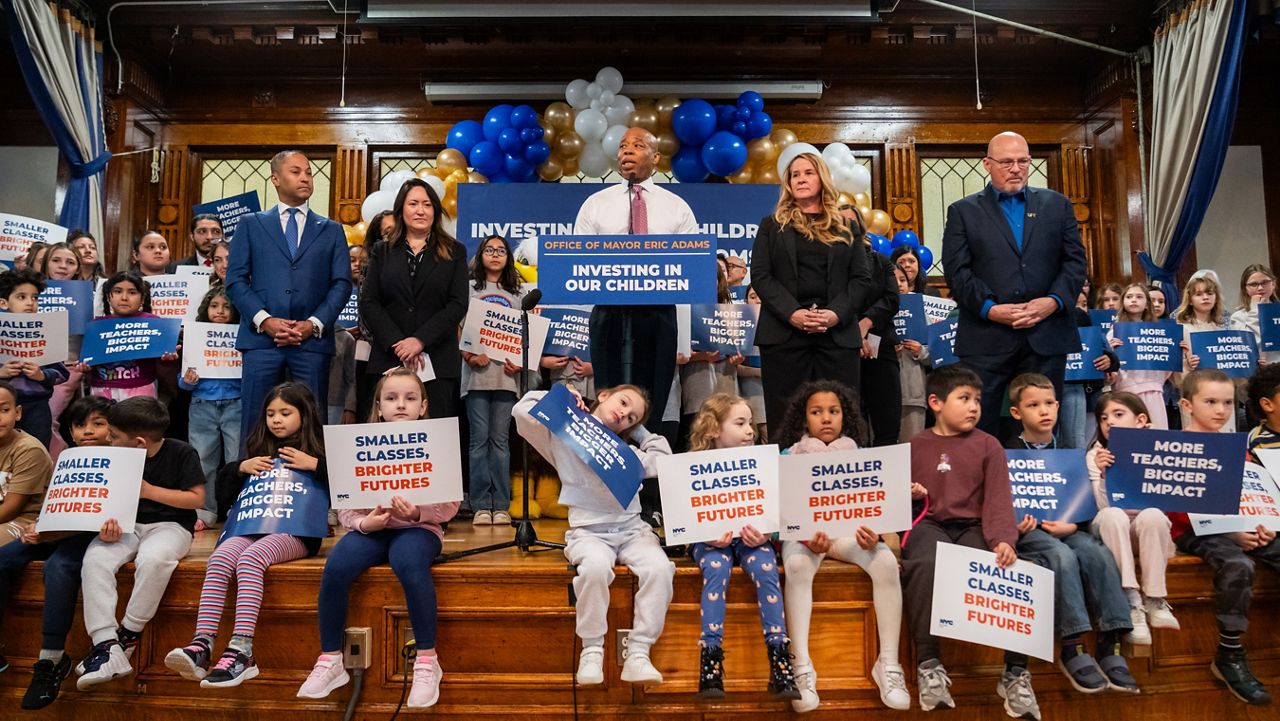The mayor and schools chancellor touted a new reading curriculum, NYC Reads, as the way to turn around years of stagnant test scores where only about half of the city’s third through eighth graders are proficient readers.
But one year into the endeavor, those test scores have gone down, NY1 has learned.
“We always want our kids to do better. We always want our kids to achieve,” First Deputy Chancellor Daniel Weisberg told NY1 in an interview Tuesday. “But it is not a shock that we saw a slight dip in the first year of a huge implementation of New York City Reads.”
Just 49.1% of students in grades three through eight scored proficient or better on their state English language arts exam this year, Education Department officials told NY1. That’s down 2.6% from the year before.
Weisberg said it’s called an implementation dip.
“Hundreds of our elementary schools, teachers and principals and support staff and kids and parents are dealing with brand new curriculum, new coaching, really a new approach to literacy,” Weisberg said.
It is a significant overhaul in how reading is taught. Schools must now use a curriculum based in what’s known as the science of reading, focusing on phonics and building vocabulary. That comes after decades of balanced literacy, which encourages guessing, using pictures and context clues
The new approach was used in about half of the city’s elementary schools last school year, and will be used in all of them next month. But last school year, schools using the new curriculum saw lower scores than others.
“The schools that already implemented did very slightly worse than the schools that haven’t implemented yet,” Weisberg said.
There have been similar trends in other states that have embraced new reading curricula. The Education Department asked NY1 to speak with Penny Schwinn, the former education chief for the state of Tennessee, which implemented reading changes.
“We saw some dips, especially in our urban areas,” Scwhinn said, as educators and students adjusted to new ways of teaching and learning. “And then fast forward two years later, we had the highest gains that we've ever seen in the state.”
The city did not share complete data with NY1 Tuesday but said there were some bright spots: students in Central Harlem’s District 5, District 7 in the South Bronx, and District 16 in Central Brooklyn saw increases, as did students in some of the city’s lowest performing schools.
They said there are positive indicators for children too young for state exams. The city has given its own screeners three times a year to children in kindergarten, first and second grade. They have not previously released that data but told NY1 this spring’s scores on those screeners were 1.8 points higher than the spring before.
Weisberg applauded teachers for the work they’ve done to implement the new curriculum, and said he knows the scores may spark skepticism among some educators and parents heading into the school year. He encouraged them to attend literacy events being held around the city and to share their concerns.
“Those are such critical grades. And so that's good to see a little bit of progress there,” he said. “It's not going to be perfect. Give us a little bit of grace as we go through the growing pains, but we are going to get there if we stay the course.”
He said the prior approach simply wasn’t working.
“I mean, we have barely cracked 50% proficiency in E.L.A. for a decade. That's not right. No New Yorker is going to be happy with those kinds of results. If you're not happy with those results, I think almost every New Yorker you talk to would say, ‘Well, listen, they're not going to change this overnight.’ We have to do things differently and we have to stick with it. We can't bend with the wind, bend with a couple of points up or a couple of points down,” he said.




_PKG_Reading_Scores_130735266_3663?wid=320&hei=180&$wide-bg$)




_CGPK_Mn_Columbia_Students_Chained_CG)